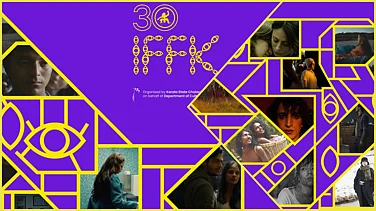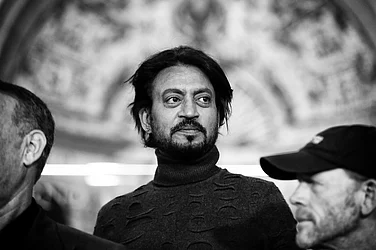The influx of internet TV and the expansion of indigenous OTT platforms catering to regional cinema content, have propelled a range of generic and creative experimentation in Malayalam cinema. The spike in subscription during the Covid-19 lockdown (up to 55-60 per cent according to the BCG-CII Media and Entertainment Report) reshaped traditional market patterns, making direct-to-streaming release a lucrative choice for producers. The mix of players like SonyLIV, ZEE5, alongside bigger names like Disney+Hotstar, Netflix and Amazon Prime Video, offer a competitive market for purchase as well as new kinds of productions in Indian regional languages, including Malayalam. Even newer streaming platforms such as Prime Reels and Neestream, have also emerged during this period, focusing solely on Malayalam film content.
The move to internet television for releasing films that were on the verge of completion started during the pandemic, with C U Soon (Mahesh Narayanan, 2020), which was publicised as a “computer-screen movie”. The trend continued with films such as Minnal Murali (Basil Joseph, 2021) that saw the provincialisation of the superhero genre through localised idioms. Unlike pre-pandemic theatrical and satellite releases, streaming platforms also allowed such regional content to reach a transnational viewership. Effectively, it bust the myth that regional cinema is limited by language affiliations, an effect perhaps also of the platforms’ algorithm-based AI feed of suggested content. The moot point here is that this provides filmmakers with some latitude in exploring and experimenting with topics that deviate from expectations that have traditionally accompanied theatrical releases.
A case in point is the 2022 Malayalam film Puzhu, released on SonyLIV. Written by Harshad, Sharfu and Suhas of Unda fame, and directed by debutante Ratheena P.T., Puzhu was simultaneously released in Malayalam, Telugu, Kannada, Tamil and Hindi. The film explores the pernicious effects of caste purity and endogamy that fuel honour killing. The negative shades seen in the character played by Mammootty would possibly not have surfaced if the film was meant only for theatrical release. In recent times, the systemic inequalities of caste oppression and honour killing have found filmic representation in regional Indian cinema through films like Sairat (Nagraj Manjule, Marathi, 2016), Pazhiyerum Perumal (Mari Selvaraj, Tamil, 2018) and Janani’s Juliet (Pankaj Rishi Kumar, English/Tamil, 2019). OTT platforms have allowed even more enunciations to emerge in this direction, for instance T.J. Gnanavel’s Jai Bhim (Tamil, 2021) was released on Amazon Prime Video, and Puzhu can be seen as falling within this category as well.

Framed as a psychological portrait, Puzhu looks at the tensions emerging from entrenched codes of caste purity—the hostility caused by the sister’s (Parvathy) inter-caste marriage to Kuttappan (Appunni Sasi), and the schism in her relationship with her brother that explodes violently by the end of the film. The film is prefaced by a mythological play enacted by a single actor, Kuttappan. Mammootty’s character becomes a stand-in for the play’s accursed king, who isolates to safeguard himself from dangers, only to be destroyed by a puzhu (worm). The film doesn’t pin down one specific meaning for puzhu as symbolic of the downtrodden, but rather uses the symbolism to point out our own culpability and inaction in the perpetuation of caste atrocities. The crude joke by the sub-registrar, who compares the couple to a “coconut kernel grabbed by a crow”, and the ensuing slap from Kuttappan, acts as a caustic reminder to the audience who may have entertained similar thoughts about the couple.
For those familiar with Mammootty’s superstar persona, the shift afforded by an OTT release also becomes apparent in the aesthetic choices made in the film. Brevity seems to be a structuring principle, as viewers are given only enough pieces of information to learn about the characters on the go, rather than flowering into a full-blown family melodrama. Thus, despite being a Mammootty vehicle in terms screen-time, his back-story is kept to a minimal and we learn very few things about him—the nickname Kuttan (his real name is never revealed), his obsessive need for regimentation and routine (mirrored in his desire to preserve the status quo), and his cold indifference towards those who are different. We learn that despite his calm demeanor, Kuttan is at war with the world—whether it is his psychological torture of the former factory engineer who once tried to kill him, or in his orders to his son to retrieve a lost chess piece. Indeed, his only preoccupation seems to be to pass on caste codes and lineage to his son, whom he disciplines through emotional abuse, regimentation and a strict control over who he interacts with. Thus, while the promos of the film never spell out caste, it is the major determinant of the plot, as seen in the affective gesture of hate and disgust mediated via caste purity. The tipping point is when Kuttan, learning about his sister’s pregnancy, is propelled to lash out at her and her husband in an uncharacteristic burst of emotion.
ALSO READ: OTTs Are The New Mainstream, Here's How

This emphasis on purity is also seen in the arrangement of space in the film. The apartment building that Kuttan inhabits is a modified, urban and modern extension of the tharavadu—an ancestral household. The building posits a clear caste-based insider/outsider dichotomy based on spatial separation, being rented out to “only our people” (upper caste/Brahmins), and forecloses any social intermixing of spaces, despite the fact that service labour is provided by oppressed castes. The interior of Kuttan’s apartment is a controlled environment where caste purity and superiority are maintained—values he considers are integral to the upbringing he wants his son to get. In a gesture reminiscent of a benevolent patriarch, Kuttan dictates to his son why he should not take food from others, but can give them his food. The space is strictly controlled and nothing is out of place, whether footwear, laundry or utensils. The perceived harmony of the apartment is almost uncanny and non-human, something captured in the otherwise unmotivated slow shots of the dining table late at night, reminiscent of a horror film.
And it is perhaps in these two ways that one can conceptualise the relationship between OTT platforms and a film like Puzhu—the reconfiguration of the film’s star-text and the associated formal style of the film. Despite being a Mammootty starrer, Puzhu is not archetypal “Mammootty”. In fact, Mammootty is not the star he usually is on screen, it is the caste-marked Kuttappan and not Kuttan who is the real star of the film’s diegetic world. The caste-body can be the narrative fulcrum of a film with Mammootty is precisely since it is not a “Mammootty film”. Puzhu’s adoption of subtle narrative and formal techniques over background melodrama and iconic moments is also made possible because of the same reason.
OTT platforms play a central role in this, as they serve as incubators for experimentation in form and content. While certainly not an ideal and benevolent space for the efflorescence of art, at least for the moment, they offer latitude in script and subtitling, as well as formal aspects like cinematography, editing and lighting, even if purely out of market-driven considerations. In the heterogeneous cultural and linguistic landscape of India, where regional language content has always had to compete with Hindi cinema and Bollywood’s mammoth infrastructure, OTT platforms offer alternative avenues whereby hyperlocal content can be featured and appreciated without cramming them into niche spaces. What OTTs have allowed India’s regional cinemas to do, is to embrace their regional flavours and market these to a cosmopolitan, content-hungry audience.
(This appeared in the print edition as "The Great Mollywood Kitchen")
(Views expressed are personal)
Darshana Sreedhar Mini is Assistant Professor of Communication Arts at University of Wisconsin-Madison






















